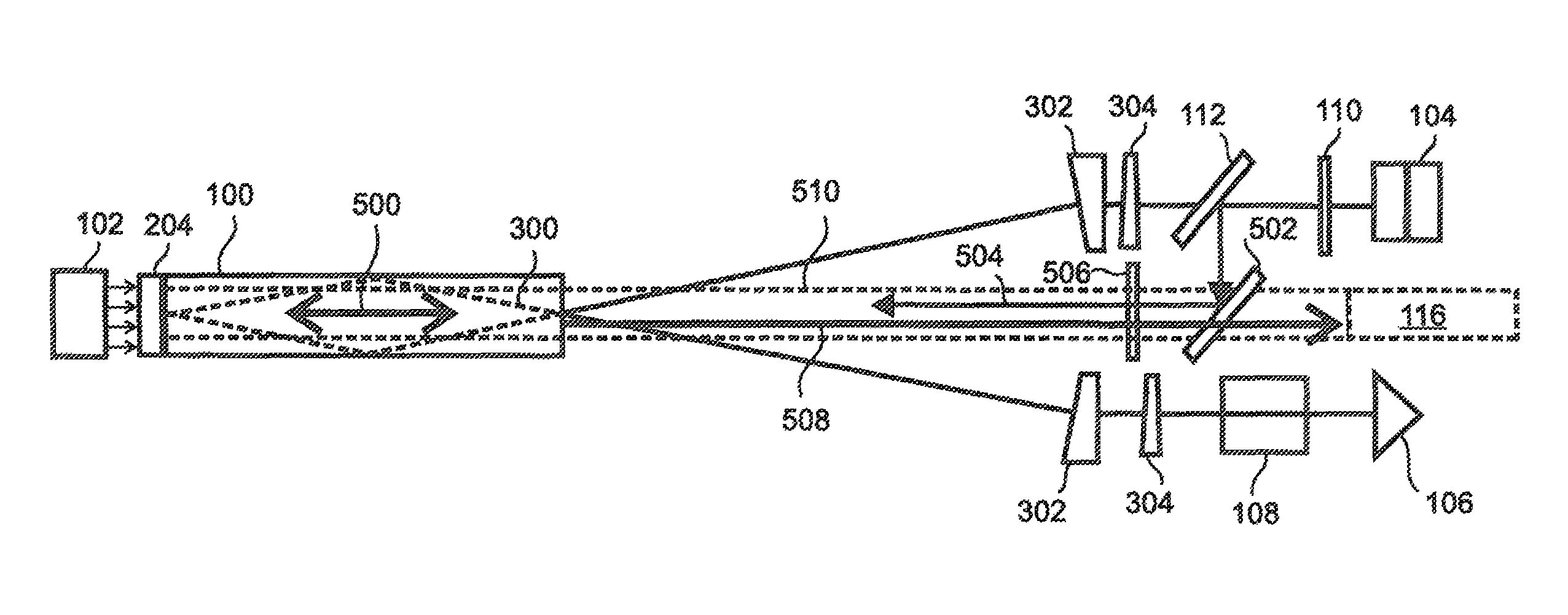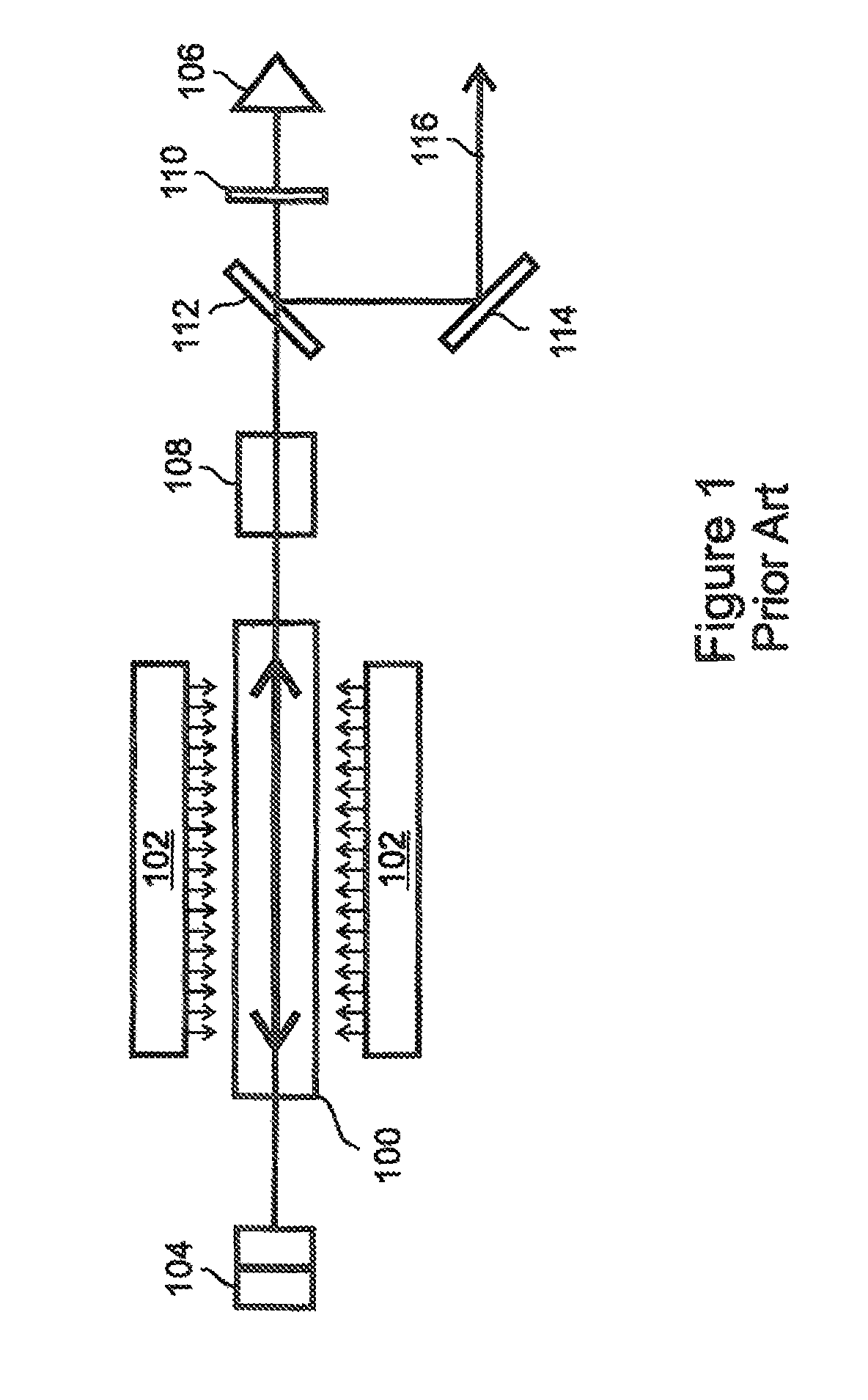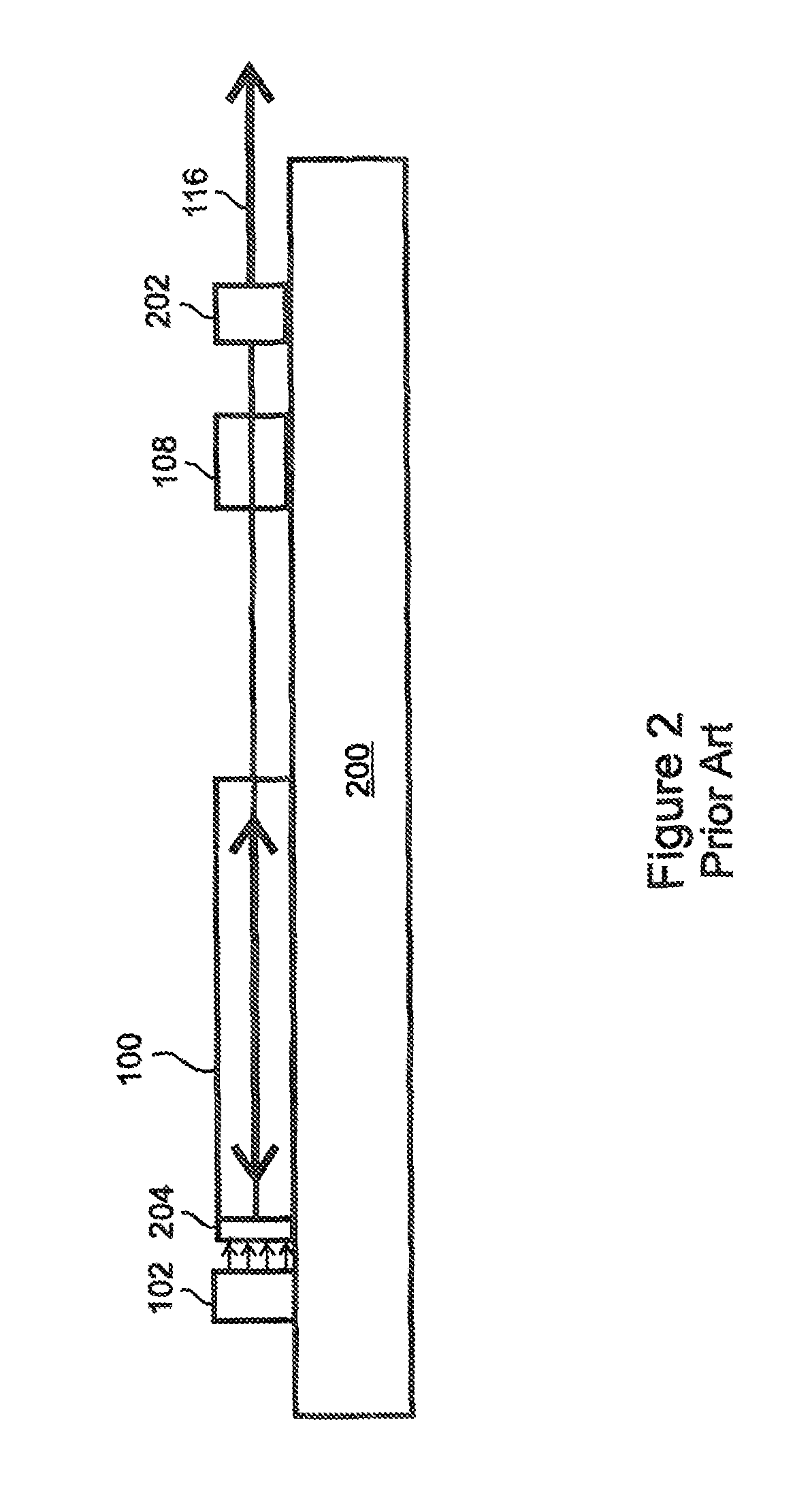End-pumped alignment and temperature insensitive laser target designator and marker
a laser target and temperature-sensitive technology, applied in the direction of laser details, optical resonator shape and construction, active medium shape and construction, etc., can solve the problems of reducing the effectiveness of laser target designators, reducing the cost of materials and assembly, and not being able to use porro prisms as the terminators of both ends of resonator paths, etc., to achieve low manufacturing cost and high beam quality
- Summary
- Abstract
- Description
- Claims
- Application Information
AI Technical Summary
Benefits of technology
Problems solved by technology
Method used
Image
Examples
Embodiment Construction
[0037]With reference to FIG. 3, the present invention is a laser target designator having a novel optical resonator design that uses a bounce geometry to place an end-pumped gain element 100 functionally in the center of the resonator, thereby allowing the resonator to be terminated by a pair of Porro prisms 104, 106 and providing a high beam quality design that is insensitive to temperature, insensitive to alignment, compact, light in weight, and low in manufacturing cost.
[0038]As can be seen in FIG. 3, the light within the resonator 300 enters the gain element 100 at an angle and undergoes total internal reflection or “TIR.” Herein this TIR configuration is referred to as a “bounce” geometry. After undergoing TIR, the oscillator light emerges from the gain element 100 at a symmetrically opposite angle.
[0039]This bounce geometry requires that the beam be reflected back to the gain element 100 from two locations, and thereby functionally places the gain element 100 at the center of ...
PUM
 Login to View More
Login to View More Abstract
Description
Claims
Application Information
 Login to View More
Login to View More - R&D
- Intellectual Property
- Life Sciences
- Materials
- Tech Scout
- Unparalleled Data Quality
- Higher Quality Content
- 60% Fewer Hallucinations
Browse by: Latest US Patents, China's latest patents, Technical Efficacy Thesaurus, Application Domain, Technology Topic, Popular Technical Reports.
© 2025 PatSnap. All rights reserved.Legal|Privacy policy|Modern Slavery Act Transparency Statement|Sitemap|About US| Contact US: help@patsnap.com



